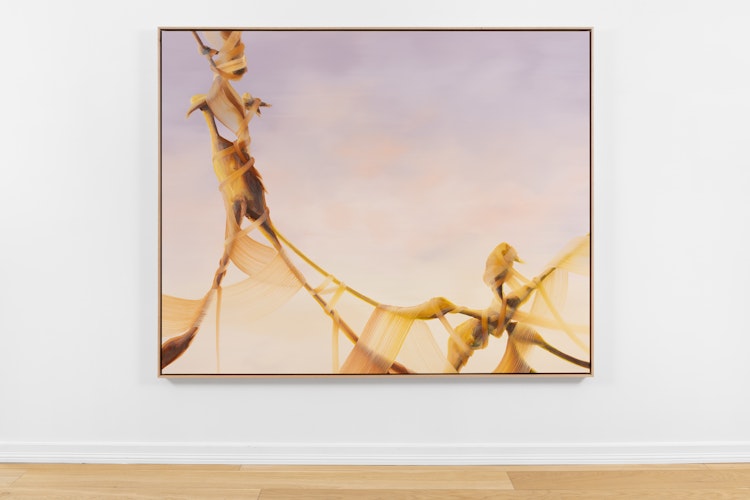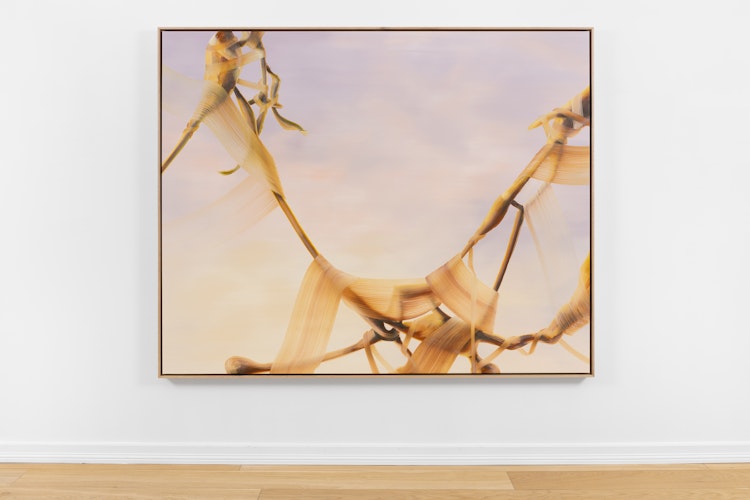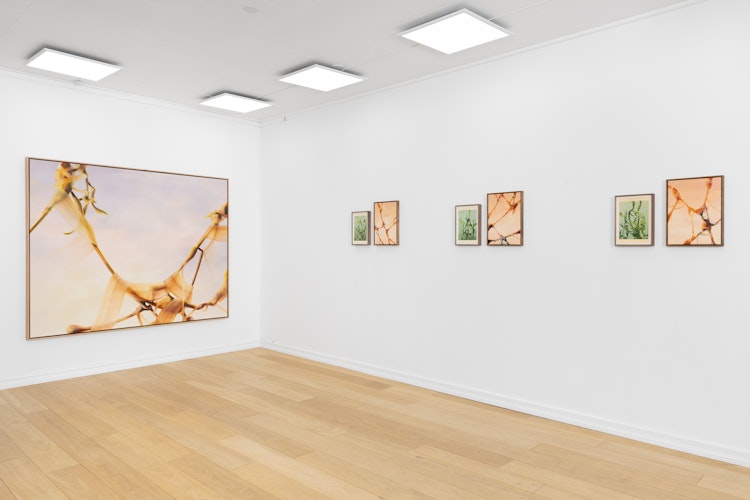Liquid attempts


Just like you.
The first time I saw Lars Morell’s shadowpaintings they seemed redolent with the 19th century. Crafted with such apparent ease, they were elusive and intangible, yet immediate in a way I thought only photographs could be. They nodded to the Victorian era, when the belief that everything could be made visible if only one had the right lens, ran parallell with a deep-seated fascination for all that lay smoldering in the shadowy corners of the everyday, just out of view. The injunction of the day was to pull the curtains aside, shed some light on those dark corners in order to see reality and one’s own place in it for what it really was!
Shadows outline a space, a grey-area where the boundaries between reality and fantasy blur. The idea of a new lover, a much anticipated triumph, a novel pair of shoes or a glance from a stranger in the dark late one evening pulsates and entices because it, like the shadow can be seen, but never touched.
A shadow refers back to an object, but the object of desire is the thing in itself, isn’t it? What we so desperately try to grasp so that what previously existed only as potential doesn’t just seep out between our fingers.
Most of us have been there, at some point or other. When the thing previously shrouded is unveiled, when we demand that a loved one turn the light on for us and guide us into the basement of their soul to reveal who they really are, or we stand there gazing down at those new shoes that don’t look anywhere near as stylish on your slightly clumsy feet as they did in the online look-book. Without the veil of impossibility, what one experienced as that one TRUE love loses some of its power and we stand there, face to face with what’s actually there, not what we thought was there.
A blind man I read about at some point had regained parts of his vision after a series of operations, but the intense and often incomprehensible world of shapes, colors and light that make up our everyday became overwhelming and he wanted nothing more than to recede back into his all too familiar fog.
It’s understandable. It’s quiet in there, in the shadows that is, you don’t risk as Nico put it laconically, to be confronted with your failures, because when you think about it, naked reality writhing next to you in the morning might not be the problem, perhaps you are?
A part of me envisions Lars in front of one his shadow canvases, pensive, yet resolute, thinking OK! Onward!
I’ll pull the curtains aside to see what they’ll reveal, because, in light of the shadows, his new painting and sculptures in the exhibition Liquid Attempts appear to be self-evident. It’s as if his shadow paintings had been dismantled piece by piece and their respective parts distributed throughout the gallery space in the form of paintings and sculptures.
Obviously we exclaim, palm to forehead!
Cause, and effect.
In practical terms, the everyday is far more unpredictable and thorny; anyone who’s ever tried to reproduce the process that led to anything being experienced as innovative knows this - the moment we try to formulate it, it evaporates. There is no predetermined straight line towards fulfillment. We wander around the periphery of our own mess, gaze over our shoulder and perhaps, if we’re lucky, we glimpse a sliver of light. When finally it does happen, it’s usually without warning.
The author George Saunders writes that one doesn’t need a grand idea in order to write a story, a single sentence is sufficient. Few of us possess an imagination capable of conceiving gestures that upend the playing-field. We need to act, and do. To bang our forehead against the proverbial wall until we burst through to the other side. The hope is that when the fog lifts and the pain subsides, the marks and lines we put to paper or canvas generate spaces we could not have achieved by thought alone.
To physically encounter one of Morell’s Translations as the paintings in the exhibition are called, is to experience some of the processes noted above.
They are revelatory.
Unpredictable, thorny.
The translation, like the shadow, refers back to the thing in question, as if something fundamental, previously relegated to the background is trying to make its way to the front of the crowd.
It’s as if the «veil» that earlier seemed to cover the entire field of vision in the shadow images has suddenly blown away, revealing not just the remains of what once cast shadows (or the shadows themselves dotted around the space as sculptures or «replikker»), but an overwhelming, luminescent space!
It’s blinding.
As in early spring, when the snow has melted and the leaves on the trees have yet to appear, the sun seems never to set..
There is no shade.
And nowhere to hide your waxy, transparent skin.
The comforting fog has lifted and we are faced with paint, light, shadow and last but not least, space.
When confronted with certain two-dimensional surfaces, we experience them as spaces I explain to my daughter with that annoying voice of the adult, as I show her pictures on my phone of Morell’s paintings, because it’s been taught us since we were children. We’ve learned to look at pictures. To translate the homogenous surface of an image into an experience of a differentiated and hierarchical space.
I feel pretty smart, hearing myself ask rhetorically whether it makes any sense to talk about a painted shadow? I mean, the darkened area in a given scene can be recorded on a light-sensitive material and registered as the imprint of a shadow in a photograph. But a shadow in a painting - that’s nothing but an illusion…
Because really, there is no spoon I say with a wry smile.
No spoon?
The somewhat cheesy Matrix reference falls flat at the feet of the ten-year-old.
Well - there are no shadows in Lars’ works. No veil, skin, sky light or space - just paint. With pigments and brushstrokes, the artist conjures space.
We see depth where there is none.
Create meaning where none is given.
Neither foreground nor background.
It mirrors life, I say with an air of importance, mostly to convince myself, because the ten-year-old lost interest in all this obviousness a while ago.
The magician is careful to conceal his tricks up his sleeve, because the viewer’s fascination is dependent upon the seamlessness of the illusion.
We allow ourselves amazement, not conviction.
Lars however is no magician. His liquid attempts neither mislead nor uncover.
Lars’ works are anything but stable, unequivocal entities.
Just like you, they vacillate.
And it’s in this wavering I sometimes see something out of the corner of my eye, for lack of a better word more. More than the sum of its parts. And it’s this more, this naive something I wax poetic about that has my ten-year-old rolling her eyes, that I try to fasten my grip on whenever I confront it in a piece of art, in other people or in life in general.
Is it worth attempting a translation of it, or will it be just another one of those supposedly grown-up explanations reducing vision to an optical illusion, smoothing over the void that lurks beneath every conversation, symbol or each and every heartfelt relation, in order to bestow meaning upon REALITY and render it manageable?
Now that the paintings are up on the wall, stripped bare, the traces of their coming into being so relentlessly put on display, it strikes me that they are less figurative than the shadow paintings, and yet, they’re more concrete. And the strange thing is, that the more precise the brushstrokes are, the more it becomes clear to us as viewers that it is just paint applied to a canvas with varying degrees of transparency we’re dealing with, the more moved I am to experience them as representations of veil, sky, of skin, bones, a foreground and a background.
It’s as if they’re saying yes please, I’ll have both.
Doubt and belief coexist.
Try to see what’s really there, breathe it in, but allow yourself also to be touched by all that you can’t put your finger on, that you only imagine is there. Because perhaps, in the end it’s just, for lack of a better word an illusion, but not as resignation, nor as an opiate, but as bare necessity.
Morten Andenæs, 2022











What are you looking for?